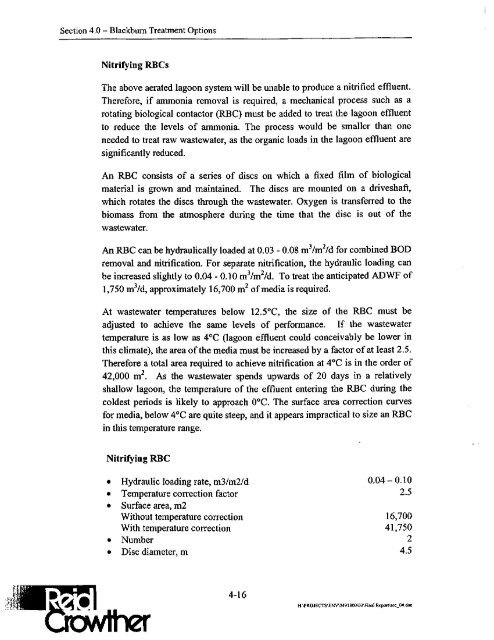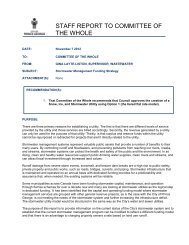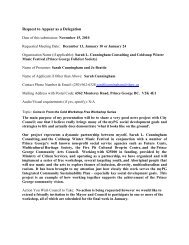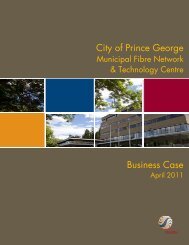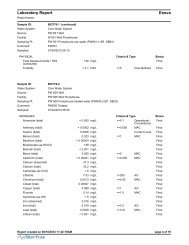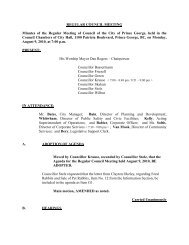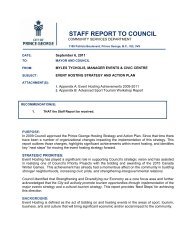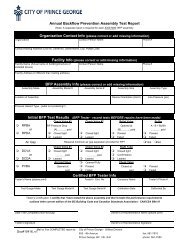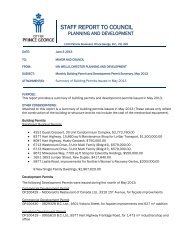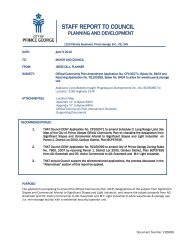Blackburn Wastewater Treatment Plant Upgrade Study
Blackburn Wastewater Treatment Plant Upgrade Study
Blackburn Wastewater Treatment Plant Upgrade Study
You also want an ePaper? Increase the reach of your titles
YUMPU automatically turns print PDFs into web optimized ePapers that Google loves.
Section 4.0 - Blackbum <strong>Treatment</strong> Options<br />
Nitrifying RBCs<br />
The above aerated lagoon system will be unable to produce a nitrified effluent.<br />
Therefore, if ammonia removal is required, a mechanical process such as a<br />
rotating biological contactor (RBC) must be added to treat the lagoon effluent<br />
to reduce the levels of ammonia. The process would be smaller than one<br />
needed to treat raw wastewater, as the organic loads in the lagoon emuent are<br />
significantly reduced.<br />
An RBC consists of a series of discs on which a fixed film of biological<br />
material is grown and maintained. The discs are mounted on a driveshaft,<br />
which rotates the discs through the wastewater. Oxygen is transferred to the<br />
biomass from the atmosphere during the time that the disc is out of the<br />
wastewater.<br />
An RBC can be hydraulically loaded at 0.03 - 0.08 m3/m2/d for combined BOD<br />
removal and nitrification. For separate nitrification, the hydraulic loading can<br />
be increased slightly to 0.04 - 0.10 m3/m2/d. To treat the anticipated ADWF of<br />
1,750 m3/d, approximately 16,700 m2 of media is required.<br />
At wastewater temperatures below 12S°C, the size of the RBC must be<br />
adjusted to achieve the same levels of performance. If the wastewater<br />
temperature is as low as 4OC (lagoon effluent could conceivably be lower in<br />
this climate), the area of the media must be increased by a factor of at least 2.5.<br />
Therefore a total area required to achieve nitrification at 4OC is in the order of<br />
42,000 m2. As the wastewater spends upwards of 20 days in a relatively<br />
shallow lagoon, the temperature of the effluent entering the RBC during the<br />
coldest periods is likely to approach 0°C. The surface area correction curves<br />
for media, below 4OC are quite steep, and it appears impractical to size an R3C<br />
in this temperature range.<br />
Nitrifying RBC<br />
Hydraulic loading rate, m3/m2/d<br />
Temperature correction factor<br />
Surface area, m2<br />
Without temperature correction<br />
With temperature correction<br />
Number<br />
Disc diameter, m


